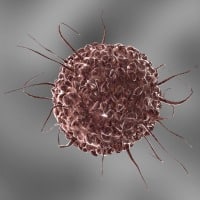Medical researchers are on a quest to develop a comprehensive understanding of the mechanism that causes the process in which cells become cancerous. This process is known as oncogenesis. A recent study keys in on the molecule generated amidst intense exercise known as lactate. The purpose of this research is to explain lactate’s role in the creation of cancer cells. The latest study’s findings were published in the popular journal Carcinogenesis.
About Lactate
Lactate is the byproduct of glycolysis, a chemical process that breaks apart sugar into smaller molecular components with the ultimate aim of generating energy. Lactate builds up in the blood and tissues when one engages in intense physical activity. If enough lactate accumulates, it can cause diminished physical performance as well as muscle tightness.
A famous German scientist named Otto Warburg first noticed that cancer cells consume an abundance of glucose compared to regular cells. Known as the Warburg effect, this phenomenon is a reference to the fact that cancer cells proceed through more glycolysis and generate more lactate than regular cells.
The Latest Research
New research on this subject matter has been spearheaded by the director of the Sports Performance Department and physiology laboratory at the University of Colorado-Boulder’s Sports Medicine and Performance Center. The director, Inigo San Millan, was determined to figure out why the Warburg effect occurs. Cancer research has deviated from cell metabolism study to genetics since Warburg’s heyday in the early 20th century. However, the latest research might shift the spotlight back to lactate’s role in the context of cancer development.
Lactate and Oncogenesis
San Millan’s research team suggests that lactate is the sole metabolic compound necessary and involved in the nearly half-dozen stages that stem from carcinogenesis. Their study analyzed the role of lactate in the process through which new blood vessels develop within tumors. This medical term for this process is angiogenesis. The study also examined the role of lactate in immune escape. This term refers to the cancer cells’ eluding of the human body’s natural immune responses. It also delves into the role of lactate in cell migration, self-sufficient metabolism, and metastasis.
San Millan’s paper details how lactate assists in the creation of an acidic microenvironment outside of the cancer cell during metastasis. This phenomenon triggers the spread of additional cancer cells. The study also explores the connection between genetic components and lactate. The research team hypothesized that three transcription factors (p53, cMYC and HIF-1) common in the majority of cancers catalyze the deregulation of lactate.
Can Halting Lactate Stop Cancer?
The important role of lactate in cancer cell creation helps explain why people who exercise on a regular basis have a low risk of cancer development. Individuals who exercise enjoy a body that is trained to transfer lactate to an energy source for the body, preventing an excessive accumulation of the metabolic compound. The findings allow for speculation that an idle lifestyle combined with an excessive consumption of sugar might lead to an abundance of lactate that leads to cancer. These findings show that lactate is not only present when cancer develops but required for each step of its development.
What’s Next?
San Millan hopes to team up with the University of Colorado Hospital to analyze the effects of custom tailored physical fitness programs created for cancer patients. At the moment, San Millan is studying the nuances of breast cancer cell lines. His hope is that additional research will ameliorate the quest to develop drugs that prevent the accumulation of lactate. These drugs will likely help key in on monocarboxylate transporters that transmit lactate between the body’s cells.




